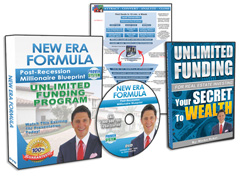
 As real estate investors, knowing the lingo, the sundry real estate terms investors come across regularly as they pursue their trade and as others may be using them from realtors, brokers, bankers, loan officers, and other allied professionals, to fellow investors is helpful to your real estate success.
As real estate investors, knowing the lingo, the sundry real estate terms investors come across regularly as they pursue their trade and as others may be using them from realtors, brokers, bankers, loan officers, and other allied professionals, to fellow investors is helpful to your real estate success.
Loan to value is one such term investors ought to know. A loan to value ratio (LTV ratio) is a comparison between the value of a loan and the value of the subject real estate involved, most typically, a home. Another way of stating this, the LTV ratio is defined as the outstanding amount on your mortgage divided by the appraised value of your property. It is the amount of money you are borrowing as a percentage of your home value. LTV is the ratio of how much you are borrowing to how much your home is worth, essentially telling you how much of a property is really yours upon how much you are borrowing using a formula of taking the loan amount and dividing it by the value of the collateral. That is the LTV ratio.
The lender involved will divide your loan amount by the lesser of the home’s appraised value or the home’s purchase price, if applicable. The lender will calculate the LTV ratio by dividing the amount of your loan by the total asset value. That is the predominant factor a mortgage lender applies to determine if a loan approval is warranted. along with other factors such as your credit score, your disposable income to make monthly payments, and the state of the asset itself. The lenders weigh those factors against the risk of a loan default.in making their decision following set guidelines.
For a buyer seeking financing, the LTV is directly reduced by the buyer’s down payment. Conventional mortgage requirements hold that the down payment must minimally be 20% of the home value, thus making the home LTV ratio 80%. Refinancing a home is calculated a little differently. For a refinance, the loan portion is calculated by using the amount you still owe, that is the outstanding principal exclusive of interest. With a refinance, the LTV is equal to your loan size divided by your home’s appraised value. For a purchase, LTV is based upon the home sales price, unless the home appraised for less than its purchase price. If that is the case, the LTV is predicated upon the lower appraised value, not the purchase price.
Very few can get conventional financing with less than providing 20% “skin in the game” as a down payment. Without that minimum down payment, they are not likely going to qualify for a conventional loan. Only a few can overcome that requirement unless they have truly outstanding credit and even if they do, they will likely pay higher interest rates as a result.
The rule of thumb for home loans is 80% LTV. If you borrow more than 80% of a home’s value, you will be likely be required to take out private mortgage insurance (PMI) to protect your lender. That additional expense is eliminated only if and when you fall below 80% LTV.
Through sundry federal programs like FHA and VA Loans and the Harp program, which focuses on refinancing and is designed to allow homeowners who are underwater on their homes to refinance to improve their terms, it is possible to acquire loans with lower down payments and an LTV exceeding 90%. There are USDA loans, loans insured through the US Department of Agriculture, loans that permit up to 100% LTV, no down payment, and are surprisingly available to suburban homeowners as much as for rural housing loans. There are conventional loans guaranteed by Fannie Mae and Freddie Mac where up to 97% LTV is allowed and FHA loans, where down payments are set at 3.5%, so the LTV allowed is 96.5%.
LTV matters as it helps lenders to evaluate risk, the more that is lent, the greater the risk. These loans are secured, of course, so the lender is protected if there is a default but lenders do not want the property, they want their money back on the terms agreed upon. However, with the LTV at 80%, and no higher, upon a default, the lender can sell the property at less than market value and recover most if not all their money most of the time.
Now to the bigger picture and why the LTV ratio can be important to an investor seller. Knowing the formula to be applied for a buyer to qualify, appreciating there are guidelines that must be followed by loan officers to evaluate and qualify a borrower, the investor seller can be secure in his or her evaluation and qualification of the buyer and closing the deal in a timely manner.
Request FREE Funding Kit and Discover How To Legally Bypass Banks And Gain Direct Access To "No-Credit-Required" Funding You Can Use To Achieve Your Financial Freedom... Start Now!












